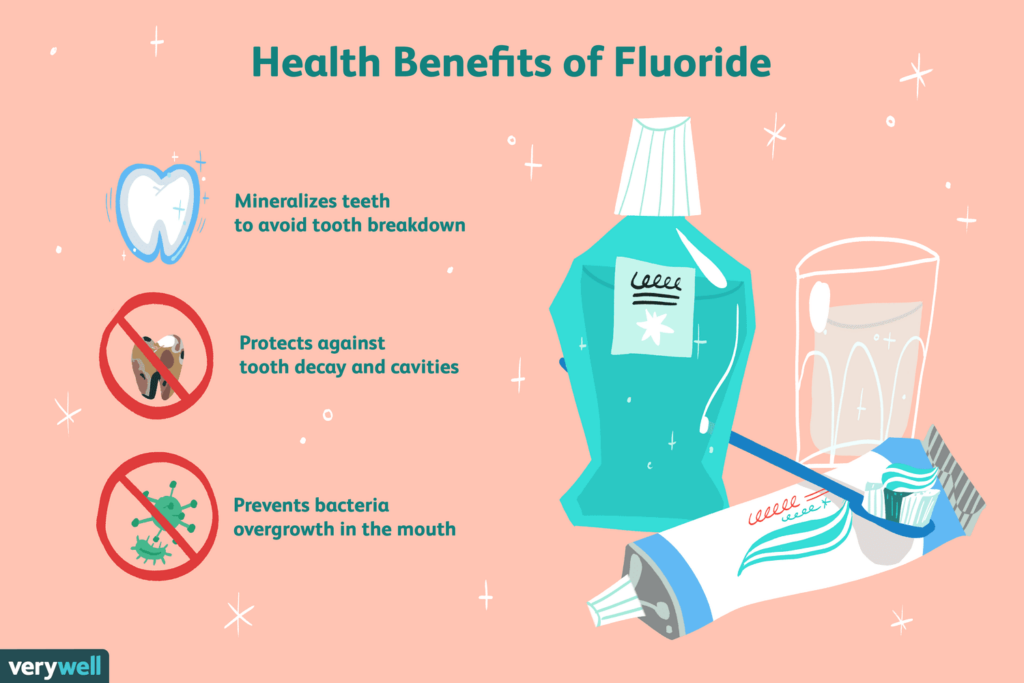Fluoride is a naturally occurring mineral found in water, soil, plants, and rocks. It has been a subject of debate for decades regarding its benefits and potential risks to human health. While fluoride is commonly associated with dental health benefits, there are concerns about its potential adverse effects, particularly when consumed in excessive amounts. This comprehensive guide aims to explore the pros and cons of fluoride use, shedding light on its effects on dental health, overall health, and the environment.
What is Fluoride?z
Fluoride is a negatively charged ion of the element fluorine. It occurs naturally in varying concentrations in water sources, depending on geological factors. Additionally, fluoride is often added to dental products like toothpaste and mouthwash, as well as municipal water supplies, as a means of preventing tooth decay.
The Dental Benefits of Fluoride
One of the primary reasons for the widespread use of fluoride is its role in dental health. When fluoride is present in the mouth, it combines with the enamel of teeth, forming a protective layer that helps prevent tooth decay. This process, known as remineralization, can reverse the early stages of tooth decay and strengthen teeth against acids produced by bacteria in the mouth.
Research has consistently shown that communities with fluoridated water experience lower rates of tooth decay compared to those without fluoridation. The Centers for Disease Control and Prevention (CDC) has recognized water fluoridation as one of the top public health achievements of the 20th century due to its significant contribution to reducing tooth decay and improving oral health across populations.
Fluoride and Bone Health
In addition to its benefits for dental health, fluoride also plays a role in maintaining bone strength and density. Small amounts of fluoride can help prevent osteoporosis and strengthen bones, reducing the risk of fractures and bone-related diseases, especially in older adults.
However, excessive fluoride intake, particularly during childhood when bones are still developing, can lead to a condition known as dental fluorosis. Dental fluorosis manifests as white streaks or spots on the teeth and occurs when fluoride levels exceed the optimal range during tooth development. While dental fluorosis is primarily a cosmetic concern and does not typically affect the function of teeth, severe cases can lead to enamel pitting and discoloration.
Potential Risks of Fluoride
Despite its benefits for dental and bone health, concerns have been raised about the potential risks associated with fluoride exposure, particularly in high concentrations. One of the most significant concerns is fluorosis, as mentioned earlier, which can occur when individuals consume excessive amounts of fluoride during childhood.
Beyond dental fluorosis, some studies have suggested possible links between fluoride exposure and other health issues, including skeletal fluorosis, thyroid dysfunction, and neurodevelopmental disorders. Skeletal fluorosis is a bone disease characterized by pain and stiffness in the joints, caused by excessive accumulation of fluoride in the bones over time. While skeletal fluorosis is rare in regions with optimally fluoridated water, it remains a concern in areas with naturally high fluoride levels in drinking water.
Furthermore, some research has raised questions about the potential neurotoxic effects of fluoride, particularly on cognitive development in children. While the evidence is not conclusive, several studies have suggested a possible association between high fluoride exposure and lower IQ scores. However, more research is needed to establish a definitive link between fluoride and neurodevelopmental outcomes.
Environmental Impact of Fluoride
In addition to its effects on human health, fluoride can also have environmental implications, particularly when present in industrial waste or agricultural runoff. Industrial processes such as aluminum production and phosphate fertilizer manufacturing can release fluoride into the environment, contaminating water sources and soil.
Excessive fluoride levels in water bodies can harm aquatic ecosystems, affecting fish and other aquatic organisms. Additionally, fluoride accumulation in soil can impact plant growth and crop yields, posing challenges for agricultural sustainability.
Efforts to mitigate the environmental impact of fluoride include wastewater treatment processes to remove fluoride from industrial effluents and agricultural best practices to minimize runoff and contamination of water sources.
Fluoride Regulation and Safety Measures
To ensure the safe use of fluoride and minimize potential risks, regulatory agencies around the world have established guidelines and standards for fluoride levels in drinking water and consumer products. These standards are based on scientific research and aim to balance the benefits of fluoride for dental health with the need to prevent excessive exposure.
For municipal water supplies, fluoride levels are typically monitored and adjusted to maintain concentrations within the optimal range for dental health, usually around 0.7 to 1.2 parts per million (ppm). In toothpaste and other dental products, fluoride concentrations are also regulated to provide effective cavity protection while minimizing the risk of fluorosis.
Furthermore, public health initiatives promote education and awareness about the importance of dental hygiene practices, including proper toothbrushing techniques and regular dental check-ups, to complement the benefits of fluoride in preventing tooth decay.
Conclusion
In conclusion, fluoride plays a crucial role in promoting dental health and preventing tooth decay when used appropriately. Its benefits extend beyond oral hygiene to include the maintenance of bone strength and density, particularly in older adults. However, excessive fluoride intake can lead to dental fluorosis and other potential health risks, highlighting the importance of regulating fluoride levels in drinking water and consumer products.
While concerns have been raised about the environmental impact of fluoride and its potential adverse effects on human health, current scientific evidence supports the safe and effective use of fluoride within established guidelines and standards. Continued research and monitoring are essential to further understand the long-term effects of fluoride exposure and ensure its responsible use for the benefit of public health and environmental sustainability.

